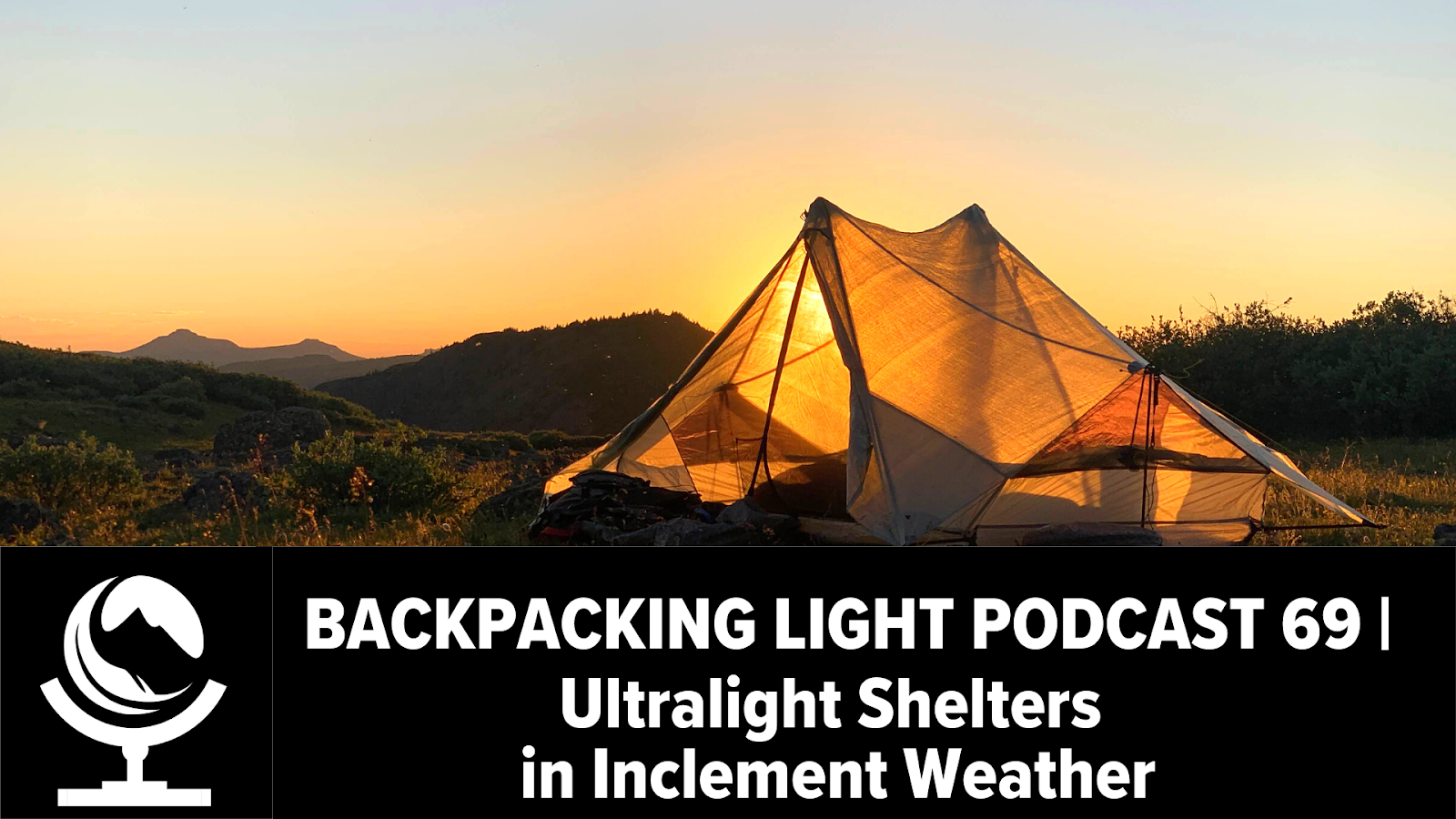Episode 69 | Ultralight Shelters in Inclement Weather
Listen
Summary
In today’s episode of the Backpacking Light podcast, we’re going to talk about gear and skills for pitching ultralight shelters in inclement conditions – rain, snow, wind, and cold.
In this Episode:
- What is Inclement Weather?
- How the structure of a shelter affects its performance in inclement weather.
- Choosing your campsite based on terrain and height above the ground.
- Pitching a shelter for stability in inclement weather.
- The downsides to shock cord for guyline tie-outs.
- Comparing different shapes and materials for tent stakes.
- Major issues regarding shelters when used in inclement weather.
Learn More
- See how an ultralight shelter behaves in a violent storm.
- Check out BPL Author Roger Caffin’s Tunnel Tent.
- Learn more about the Locus Gear Khufu tent in our Gear Shop.
- Read about tent stake holding power and what makes the best tent stakes, or join the discussion in the BPL forums.
- See the TarpTent DiPole Li Review and Durston X-mid Pro Review.
- Member Q&A: Choosing an ultralight shelter for backpacking.
- Enroll in our online course Backpacking in Inclement Conditions.
About the Backpacking Light Podcast
Subscribe
- Apple Podcasts | Spotify | Google Play | Stitcher | RSS
More Episodes
Feedback, Questions, Tips?
- Submit them via email or Twitter and get featured on our next podcast!
Credits
- Backpacking Light - Executive Producer
- Ryan Jordan - Director and Host
- Chase Jordan - Producer
- Look for Me in the Mountains - Music
- Written by: Chris Cunningham and Ryan Jordan
- Performed by: Chris Cunningham (acoustic guitar, lead and harmony vocals, harmonica), Chad Langford (upright bass), and Tom Murphy (mandolin).
- Produced by: Basecamp Studios in Bozeman, Montana
Sponsors
- This episode of the Backpacking Light Podcast is supported and kept advertising-free by Backpacking Light membership fees. Please consider becoming a member which helps support projects like this podcast, in addition to a whole slew of other benefits!
Contact
You can contact us at [email protected], or follow us on social media -
- Backpacking Light - Facebook | Instagram | Twitter
- Ryan Jordan - Instagram | Twitter | WWW
- Chase Jordan - WWW
Disclosure
(Updated April 9, 2024)
- Product mentions: Backpacking Light does not accept compensation or donated/discounted products in exchange for product mentions or placements in editorial coverage, including podcast episode content not excplicitly identified as sponsored content.
- Some (but not all) of the links in these show notes may be affiliate links. If you click on one of these links and visit one of our affiliate partners (usually a retailer site), and subsequently place an order with that retailer, we receive a commission on your entire order, which varies between 3% and 15% of the purchase price. Affiliate commissions represent less than 15% of Backpacking Light's gross revenue. More than 70% of our revenue comes from Membership Fees. So if you'd really like to support our work, don't buy gear you don't need - support our consumer advocacy work and become a Member instead.
- Learn more about affiliate commissions, influencer marketing, and our consumer advocacy work by reading our article Stop wasting money on gear.




Home › Forums › Episode 69 | Ultralight Shelters in Inclement Weather